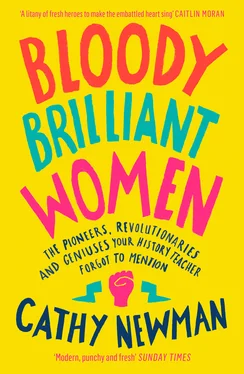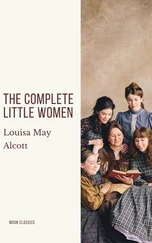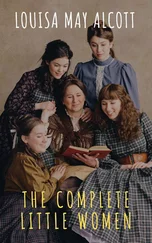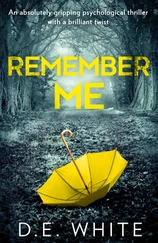1 ...6 7 8 10 11 12 ...21 More and more women like these five were feeling that they had a role to play in improving society. They knew they could answer the question of what constituted a ‘decent livelihood’ or ‘tolerable conditions’ as capably as the men. But the late-Victorian expectation was that women would suppress their intellects, the better to boost men’s sense of their own superior brainpower.
All four parts of Coventry Patmore’s best-known poem, the sickly paean to marriage ‘The Angel in the House’, were first published together in 1863. By the 1880s this piece of sludge epitomised the Victorian ideal where women were concerned. ‘Man must be pleased,’ wrote Patmore, ‘but him to please is woman’s pleasure.’
For Patmore, women – being both altruistic and obedient by nature – were best employed in the home, making their husbands happy and looking after any children. Even if their husbands stopped loving them, they must continue to love these men out of loyalty: ‘Through passionate duty love springs higher, as grass grows taller round a stone.’
What became known as the doctrine of separate spheres – that women belonged at home while only men could cope with the demands of the workplace – found its most famous expression in an essay by the writer and art critic John Ruskin called ‘Sesame and Lilies’, published in 1865. The job of a woman, Ruskin argues, is to patrol the domestic front: her intellect, such as it is, is ‘not for invention or creation, but for sweet ordering, arrangement, and decision’:
By her office, and place, she is protected from all danger and temptation. The man, in his rough work in open world, must encounter all peril and trial; – to him, therefore, must be the failure, the offence, the inevitable error: often he must be wounded, or subdued; often misled; and always hardened. But he guards the woman from all this …11
Pity Ruskin’s poor wife! Indeed, his own marriage to Euphemia ‘Effie’ Gray was annulled after six years on the grounds of non-consummation. Supposedly the sight of her pubic hair and menstrual blood on their wedding night disgusted him.
If the ‘separate spheres’ doctrine sounds a bit barmy to us today, plenty of women at the time couldn’t get their heads round it either. The suffragist and campaigner for female education Emily Davies declared that ‘men have no monopoly of working, nor women of weeping’.12 She railed against a ‘double moral code, with its masculine and feminine virtues, and its separate law of duty and honour for either sex’.13
Nowhere was this moral code more obviously unfair than in the bedroom. If a man committed adultery, it was a regrettable but understandable lapse. (It was in men’s nature to have sex whenever they felt like it, so what could you do to stop them?) For a woman, however, it was catastrophic, unforgivable, life changing. The Matrimonial Causes Act of 1857 ruled that a woman could be divorced on the grounds of their adultery alone, whereas a man needed to be found guilty of other additional offences. He’d have to have committed incest, or not only been unfaithful but also deserted his wife.
The Act had led to an explosion in the divorce rate because middle-class couples could afford to split. Before the Act and its creation of a dedicated Court of Divorce and Matrimonial Causes, a marriage could be dissolved only by an Act of Parliament, at massive expense. In 1858, its first year in operation, there were three hundred divorce petitions compared to three the previous year.
One of these three hundred was brought by the industrialist Henry Robinson and became notorious. Despite having several mistresses and two illegitimate children, Robinson sought to divorce his wife Isabella on grounds of her infidelity, even though the only proof was a diary in which Isabella had been unwise enough to confide her erotic fantasies; a diary which shocked the nation when it was read out in court and extracts from it printed in newspapers.
Letters sent to Isabella by the object of her lust, a married homeopath called Edward Lane, proved nothing; nor did the diary prove anything save the lively sexual imagination of its author. But it was used against Isabella in court to protect Edward’s reputation. Broken and humiliated, she was obliged to defend herself by claiming that the diary was a dream-vision, a hallucination, and that a uterine disorder she suffered from had induced ‘erotomania’.14
By 1880 the idea of a woman being imprisoned by an unhappy marriage was grimly commonplace. Though of course, it was hardly a new one. The heroine of Mary Wollstonecraft’s 1797 novel The Wrongs of Woman: or, Maria: A Fragment is locked up by her husband, first in their home and later in a mental institution. In the asylum Maria writes a memoir for her infant daughter who has been taken away from her: ‘But a wife being as much a man’s property as his horse, or his ass, she has nothing she can call her own!’ she protests. ‘He may use any means to get at what the law considers as his, the moment his wife is in possession of it, even to the forcing of a lock.’15
Under nineteenth-century marriage law a woman’s legal identity was absorbed into her husband’s – a principle known as ‘coverture’. Without her husband’s consent a wife was unable to make a will, sue or be sued. All her property became her husband’s, including anything she had owned before and brought to the marriage. And her husband had custody of their children.
A change came in 1870 with the Married Women’s Property Act, which permitted women to be the legal owners of any money they earned and to inherit property. And in 1884 the Matrimonial Causes Act denied a husband the right to lock up his wife if she refused to have sex with him – although it wasn’t ratified until 1891 after an incident which became known as the ‘Jackson Abduction’.
On 5 November 1887, Emily Hall, a respectable solicitor’s daughter, married Edmund Jackson, the feckless son of an army officer. The couple never lived together and on their wedding night, before they had the chance to consummate their marriage, Edmund left for New Zealand, telling Emily he would send for her once he and his friend Dixon had established themselves there as farmers.
But Emily decided she didn’t want to go to New Zealand after all, feeling that ‘it would be impossible for me to hope to endure the rough life of a colonial settler’.16 So she wrote to Edmund telling him this, adding that she no longer wanted any contact with him. The begging tone of his letters to her from New Zealand worried her and she suspected he had married her for her money rather than out of love. Edmund’s angry reply asserted his husbandly rights in no uncertain terms:
Do not make any mistake. There shall be a perfect understanding between us, but I will make it, not you. It is most ridiculous for you to say you will have this or that; it depends on whether I approve or no.17
Four years passed. Then, without telling Emily, Edmund returned to Britain. Having obtained a decree for restitution of conjugal rights, he tracked Emily down to the Lancashire village of Clitheroe, where she had been brought up and her family still lived, and he kidnapped her as she was leaving church one Sunday. He bundled her into a waiting carriage with such haste that he knocked the bonnet off her head, drove her to a house he had rented in Blackburn and locked her in. Outside the house, to stop her trying to escape, he planted a team of hired heavies. Emily’s friends tracked her down and demanded entry. When this was refused they called the police, but to no avail.
A crowd gathered outside the house and watched as supplies were delivered. On the morning after the abduction, reported The Times , ‘milk and the papers were taken in by means of a string let down from one of the bedroom windows, and, later on, all kinds of provisions were obtained in the same way. At noon a box of cigars was hoisted up to the garrison.’ On 11 March 1891, Edmund was forced to leave the house after Emily’s sister filed a charge of assault against him for injuries she’d sustained trying to defend Emily during the abduction. Even as he left, though, his heavies swarmed around the house waving sticks.
Читать дальше












